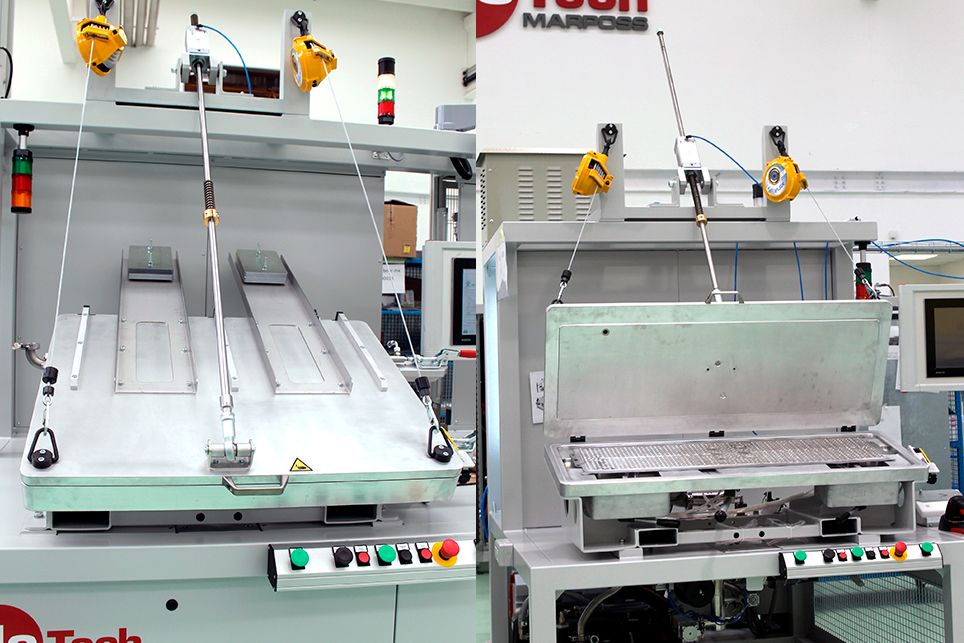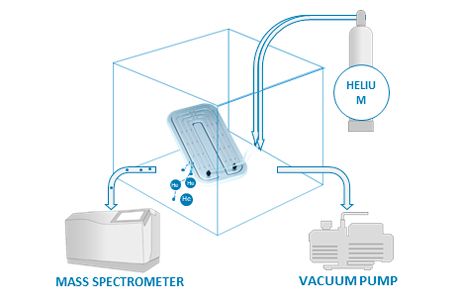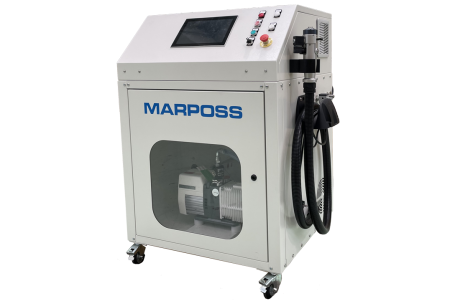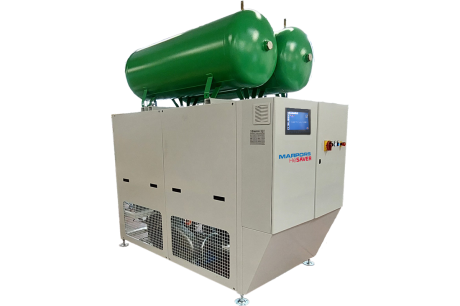Leak Testing Of Battery Cooling Plate By Helium Detecting System
Leak testing is an essential and high-quality operation in the Battery Cooling Plate production process, since it verifies that no leakage is associated to the coolant circuit system, simulating real operating condition.
Before the assembly on the propulsion system, a crucial step is to verify the tightness of the cooling plate to ensure the efficiency and the long-term reliability of the global system.

The core of the application is the fixture that is the chamber of testing itself. The design, the construction, and the resulting know-how have been fundamental for the success of this application.
One removable and exchangeable vacuum chamber, with manual opening and closing of the lid and manual loading/unloading.
The chamber consists of two parts inclined by convenient ergonomic position.
One fixed part that represents the body of the chamber, with the dedicated saddle where the part is positioned by the operator. One movable part composed by a manual cover with which the part is blocked and where a dedicated additional sealed volume is designed for coupling allowance.
As requested, the machine includes a pneumatic safety device that prevents the top plate form slamming down. The operator can manually engage/disengage via button, in order for the plate to open/close.
The chamber is provided with test fixtures to allow the connection of the battery cooling plate to the process circuit of the machine, all pneumatic movements are outside the chamber and manually operated.
Test fixture is designed in the vacuum chamber according to the drawing of the part; a fixed scanner mounted outside of the chamber is able to read the part label when parts are loaded inside the chamber.
The chamber is interchangeable and identified by a code which is automatically controlled by the machine every cycle, so checking that it matches with the Xed working program.
The chamber is compact in order to minimize pumping capacity required and the fixtures are connected to the process circuit of the machine by means of manual couplings.
A well-designed internal interchangeable tooling completes the chamber configuration to allow positioning and connections to battery cooling plate model.
Principle of measurement: global test under vacuum chamber through spectrometer analysis of Helium trace gas.

The machine vacuum chamber is assembled on welded and painted frames. The vacuum pumping system is placed below the chamber. The electric switchboard, the analysis system, and the pneumatic boards for the distribution of the air and the helium are enclosed within frames.
HMI is made by a touch-screen color monitor and one remote control box with the push-buttons and light signals for the operator.
The equipment provides separate outlet ports for helium and air discharge and it is engineered to be connected to a helium recovery system.
A sniffer with 5 m tube is provided to carry out a manual leak search: the sniffing cycle can be used with the chamber open to re-test the rejected part (at low pressure) and to locate the leaks.
The machine is also provided with one barcode label reader fixed to the machine structure. Before the test can start, the barcode reader reads and checks the label and allows the test to proceed.
The bench incorporates an industrial PC, provided with 15” touch-screen color monitor, that performs HMI functions while supervision of the process is made by a PLC.
- Chamber volume minimization
- Chamber interchangeability between different machines
- Configurable HMI touch screen interface
- Push button panel and light signals for easiness of the operator
- Fixture design suitable for future loading/unloading by automatic system
- High accuracy of the system
| Test Pressure | 2,4 bar |
| Output rate | 60 pieces/hour |
| Reject threshold | 0,6 ccm/min at 2,4 bar |

